The normal way that people generally debug a WordPress plugin issue is by disabling all the plugins and then enabling them one by one directly from the Plugins menu.
Don’t do that.
That approach, although a good one, has certain downsides:
- Disables plugin-associated functionalities for site visitors on the frontend
- Very time-consuming
Instead, a better way to do that same thing without both the aforementioned drawbacks is:
By enabling the troubleshooting mode using the Health Check & Troubleshooting plugin.
I hear you saying – “A plugin to debug other plugins?“
Well, that is WordPress, in a nutshell.
Note that this article is meant to be for non-tech savvy people without requiring FTP or CPanel login and editing PHP files to enable/disable constants.
If you’re savvy enough, then you probably already know multiple ways to debug issues and you probably don’t need to read this article.
Now, of course, every issue is different and could be caused by a variety of possible reasons, but if you’re sure that some active plugin is the culprit, then the Health Check & Troubleshooting plugin is the best bet to find out that culprit much quickly and disable/remove it.
This plugin is specially built for this exact purpose by the core WordPress team, so you don’t have to worry about it breaking things further.
Here’s how you can debug a WordPress plugin issue with the Health Check & Troubleshooting plugin:
1. Install the plugin from the Plugins > Add New screen from your WP dashboard. Activate it.
2. Navigate to Tools > Site Health from the menu, and click on the “Troubleshooting” tab.
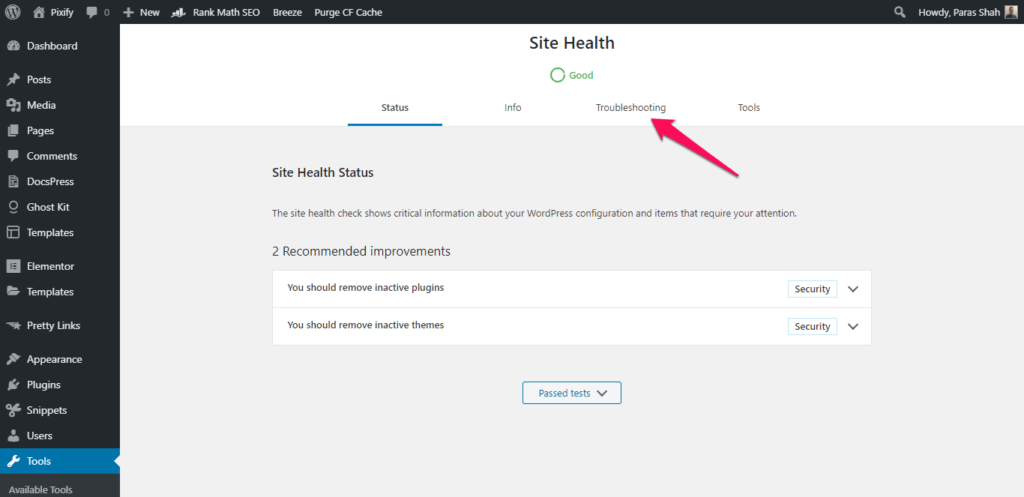
3. Enable Troubleshooting Mode by clicking on the button. This will enable the Troubleshooting Mode only for you, while you’re logged in.
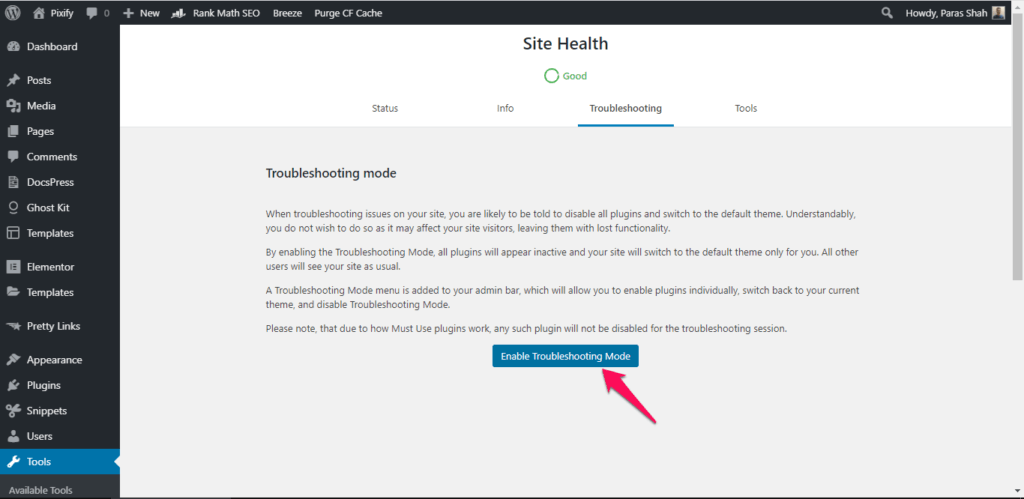
4. Navigate to the Plugins page.
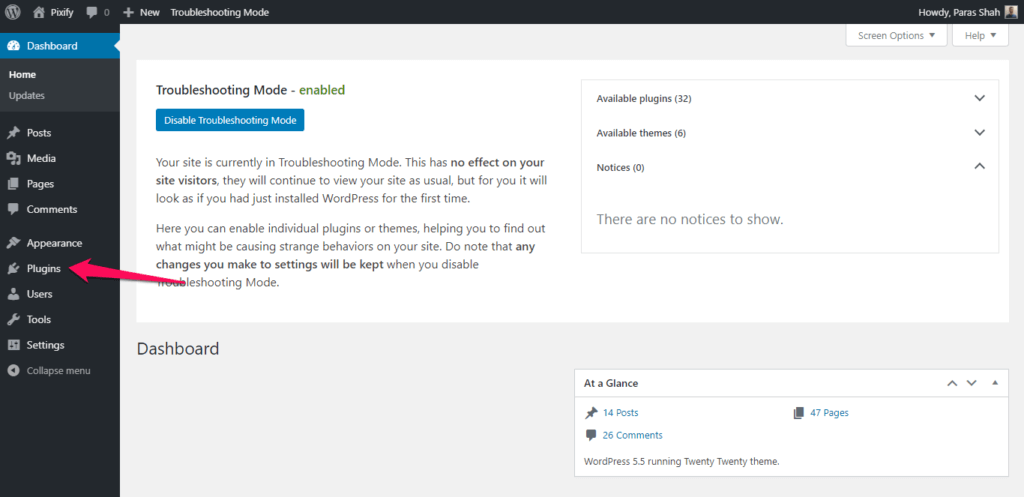
5. Select the plugins which you think are the culprit and from the Bulk actions menu, apply the “Enable while troubleshooting” action.
An example for you where I debug our Designer Powerup Elementor add-on (which is dependent on Elementor and Elementor Pro):
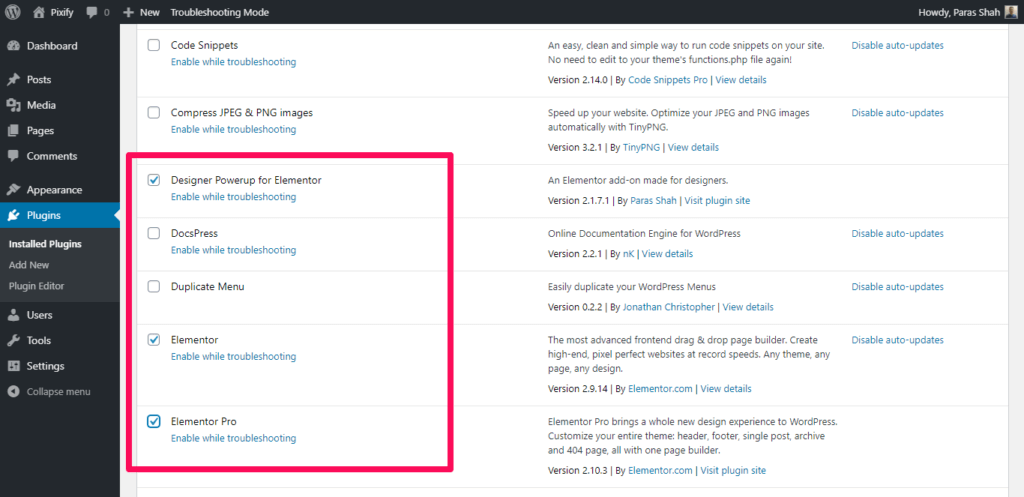
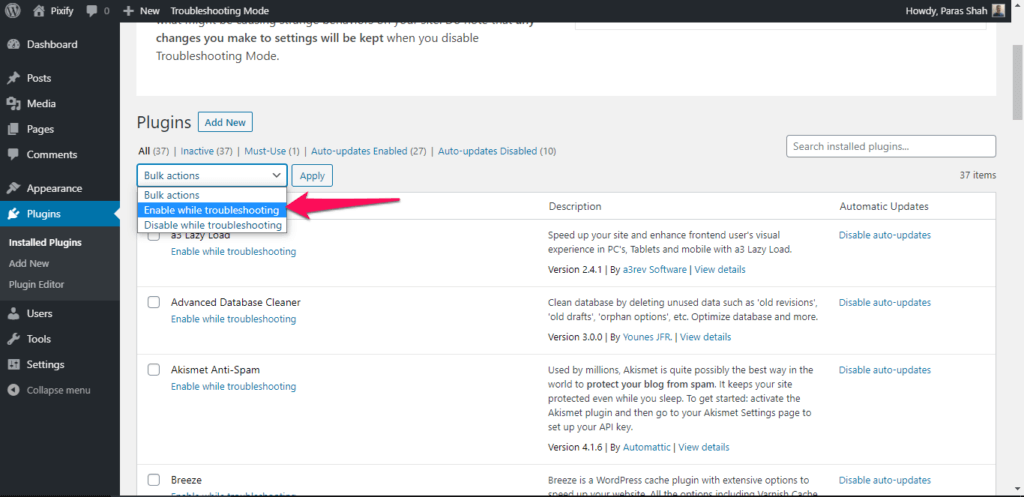
6. Check if the error persists.
If it does, then the culprit is amongst the selected plugin(s). If you have more than one enabled, disable them one by one until you reach the last one and the error still persists.
If it does not, then disable all those, and then enable another set of plugins. Repeat steps 5 and 6 until the culprit is found.
7. Once you’re done, disable the troubleshooting mode.
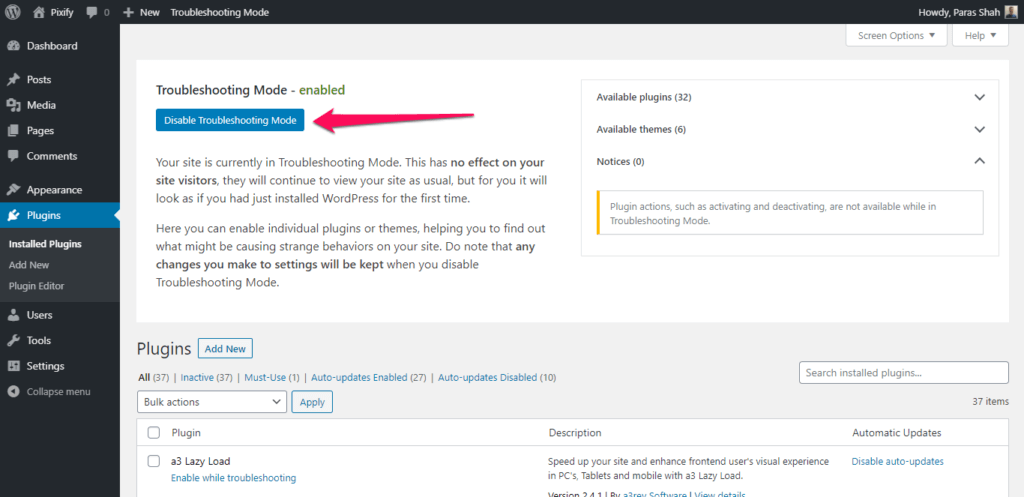
Advantages of using the troubleshooting plugin to debug a WordPress plugin issue:
- Doesn’t affect the frontend or other users. The activation state toggling only happens for you while logged in.
- Switches to the default WordPress theme. This lets you check if the issue is happening in conjunction with your active theme.
- No time spent remembering, re-activating, and re-configuring all the plugins and their settings again once you’re done with troubleshooting.
Basically, this is a better alternative to direct toggling of plugins active state as you don’t run into the above-mentioned risks and spend less time in finding the culprit overall.
What should you do after finding the culprit plugin causing the issue?
There are several ways to go about it:
The best way would be to open a support ticket via email or some other channel that the plugin provides and let the developers know about the issue. They should help you sort out the issue.
Or you can post in some existing plugin community to see if other plugin users are facing the same issue. This can be quicker in cases of very popular plugins.
Either way, I would urge you to not give a 1-star rating just for a bug existing in a plugin. It could be a compatibility issue with other plugins on your site or maybe something else. At least give them a chance to look-into and solve your query first.
